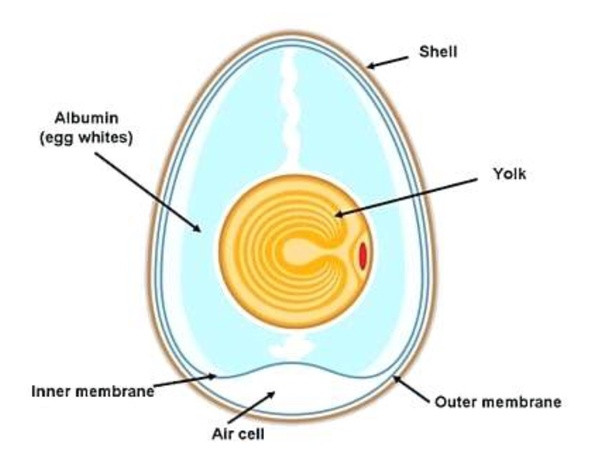If you took a trip to 16th Century Europe, you could meet or see Michaelangelo, da Vinci, Martin Luther, Charles V, Henry VIII, and many other fascinating people from that period. But, you’d also be shocked by many things, especially everyone’s diet.
Michaelangelo never tasted marinara sauce on his pasta because tomatoes were unknown in Italy. No Irishman, German, or Pole had ever seen a potato. No German, Swiss, or Frenchman had ever tasted chocolate, nor vanilla.
What? It’s true. Foods from the Americas started coming to Europe in 1493 when Columbus brought bell pepper seeds and a few others. But it took decades for these to become noticed and spread. Some items like tomatoes took a long time to catch on. It was believed that tomatoes were poisonous until a Frenchman demonstrated that they were not. Cortez first learned of chocolate from Moctezuma in 1520.
European Diet
Fundamental to Italian cuisine are the fagioli soups. Fagioli means beans — the common bean like navy, kidney, black, lima, northern, and pinto. There were none of those in Europe, just fava beans. Nor was there corn, squashes, yams, strawberries or pineapples — no peanuts, so no peanut butter — no zucchini, pumpkins, avocados, or cashew nuts.
There were no hot chili peppers in Europe. The only hot spices were pepper, mustard, and horseradish. But what about Asia? The Chinese and Indians love chili peppers. Chili peppers were brought there from the Americas by European sailors, and they became extremely popular. In fact, chili peppers found their way to Europe from the Americas, to India, then to England. There were no bell peppers either, of any color.
There was no white or brown sugar, just honey for sweetening. No Englishman puffed on a pipe, nor did any Frenchman smoke a cigarette — tobacco was unknown. No green beans, tapioca, papaya, guava, passion fruit, cranberries, sunflowers, pecans, allspice, or chicle (chewing gum).
The European diet was bland. Nourishment came from breads, pasta, grains and meat porridges, apples, pears, berries, beer, eggs, fish, and dairy foods. There was no coffee at this time either, although coffee came from Arabia, not the Americas.
Sound boring? It was. Most of the foods for which European countries are famous like Swiss chocolate, and Irish potatoes, were introduced in the past 400 years. Yet, most people I know think that potatoes came from Ireland.
Negative Side Effects
I find it interesting to observe the effects of introducing new food sources to a place. We’ve all heard of the great impact of the Irish Potato Famine. How did that happen?
The potato was brought to Europe in 1536 and was spread by seafarers to the rest of the world. It quickly became a staple food crop in Europe. It was so successful at feeding the people of Ireland that it touched off a population explosion, resulting in hordes of Irish immigrants to North America. By 1800 it was not unusual for an Irishman to eat an astonishing ten pounds of potatoes a day! Many Irish were literally surviving on potatoes.
For over 7,000 years, the Indians of South America cultivated more than a thousand varieties of potato. But the lack of genetic diversity in Europe left the potato vulnerable to various diseases. One potato disease known as Late Blight, caused by a fungus-like oomycete called Phytophthora infestans, was responsible for the Great Irish Potato Famine of 1845. It spread rapidly in western Ireland and resulted in widespread crop failures. More than a million Irish died of hunger and 1.5 million more emigrated to the United States, resulting in a huge increase in demand for the potato in the USA.
So, introducing a great source of nutrition to a region triggers a population explosion. This makes sense. And, it happened again. Africa never had an overpopulation problem before. What happened?
Corn was domesticated from a wild plant called teosinte more than 7,000 years ago in Central America. Corn is fundamental to the Mayan creation myth and is considered a sacred plant. The ears of the wild teosinte plant were small but years of domestication resulted in larger plants and larger ears of corn. Corn spread throughout the Americas. Popcorn was invented by North American Indians. Corn was brought to Europe as a curiosity by the first explorers and Europeans were not much interested in it. However in Africa, it spread quickly, and together with the peanut and cassava from the Americas, completely transformed the diet of much of Africa. The productivity and nutritional value of these foods resulted in a rapid rise in population in Africa, similar to the effect of the potato on Ireland.
Another negative side-effect came from the introduction of tobacco. In the Americas, tobacco was smoked in moderation, often associated with religious or other ceremonies. In Europe, and throughout the world, it became a highly addictive drug, smoked excessively, resulting in millions of premature deaths.
Lastly
To finish off the list of foods from the Americas, we have turkeys, brazil nuts, prickly pear, huckleberries, annatto (achiote), and maple syrup.
Lastly, although not foods, many other important substances came from the Americas such as rubber, mahogany, hickory, cochineal dye (Natural Red Dye #4), and logwood. Logwood was a very important commodity, driving politics, economics, and piracy in the Caribbean until the invention of aniline dyes in the 19th Century.
If you plan to travel by time-machine to Europe of the past, be prepared for extremely disappointing dining.
Please comment below.

Recent Comments